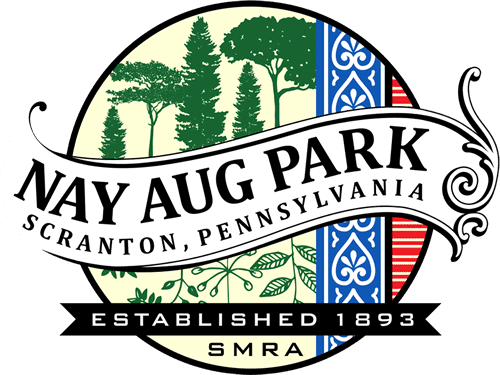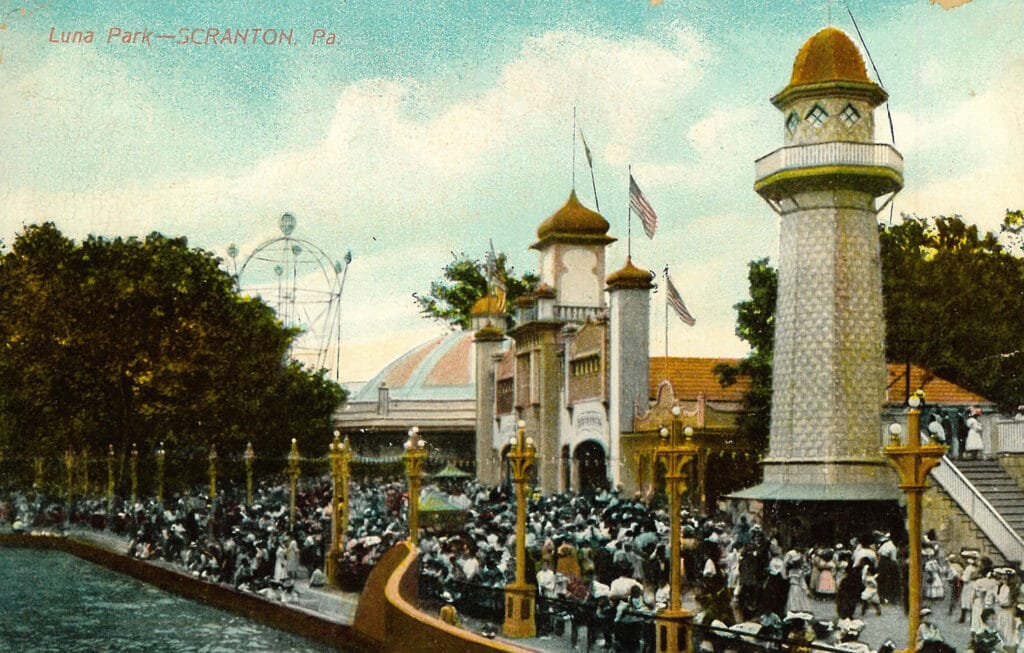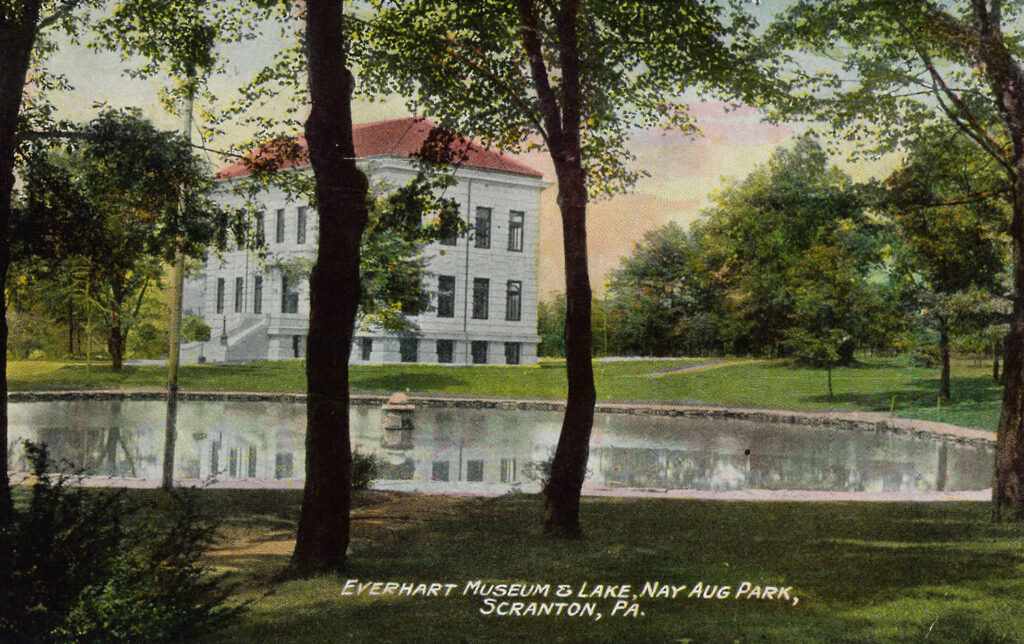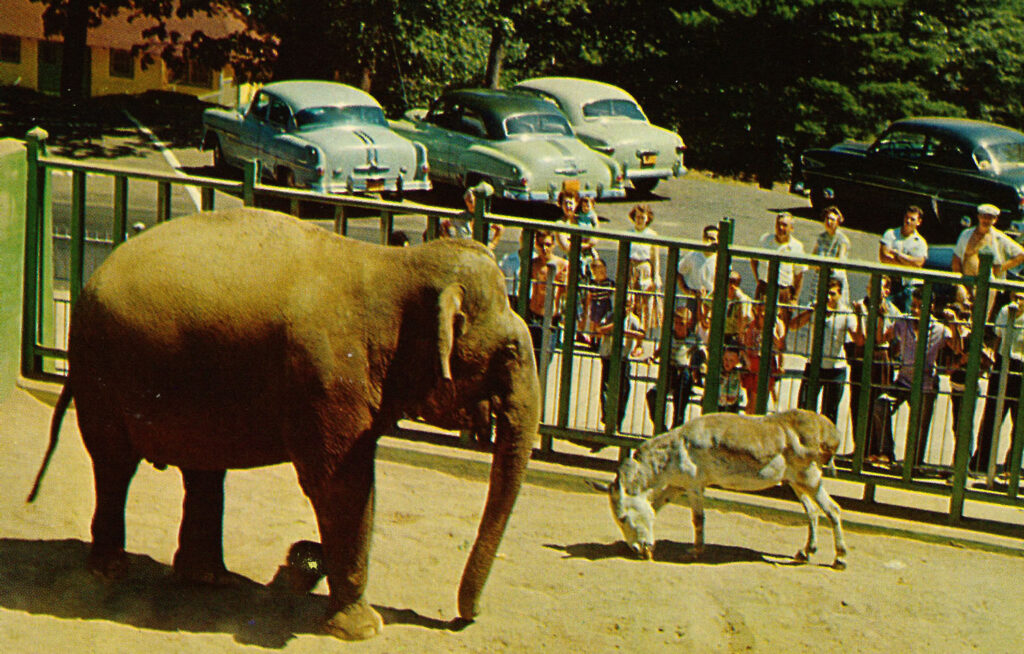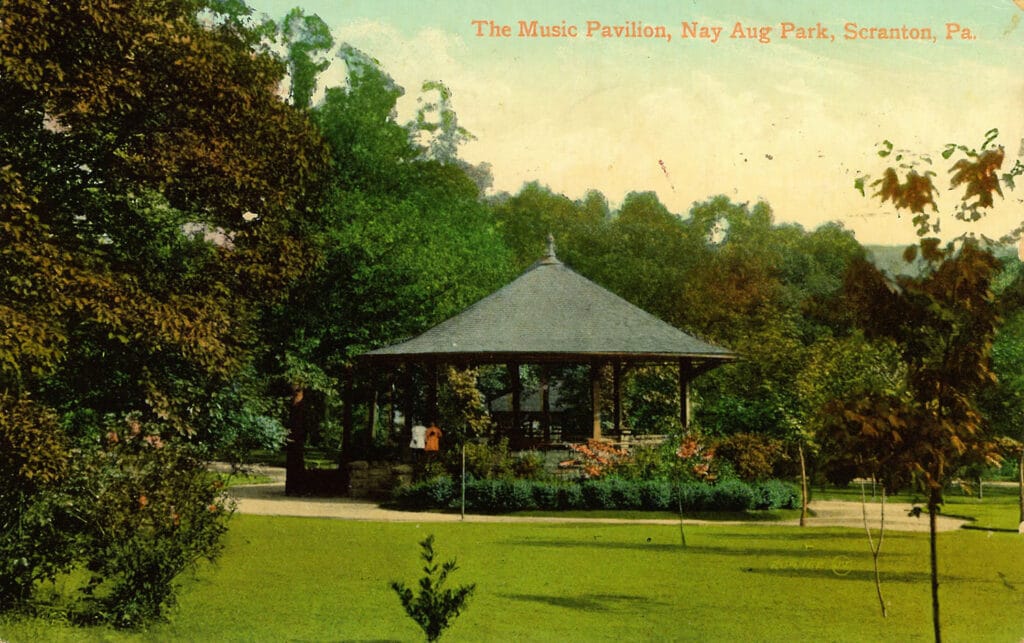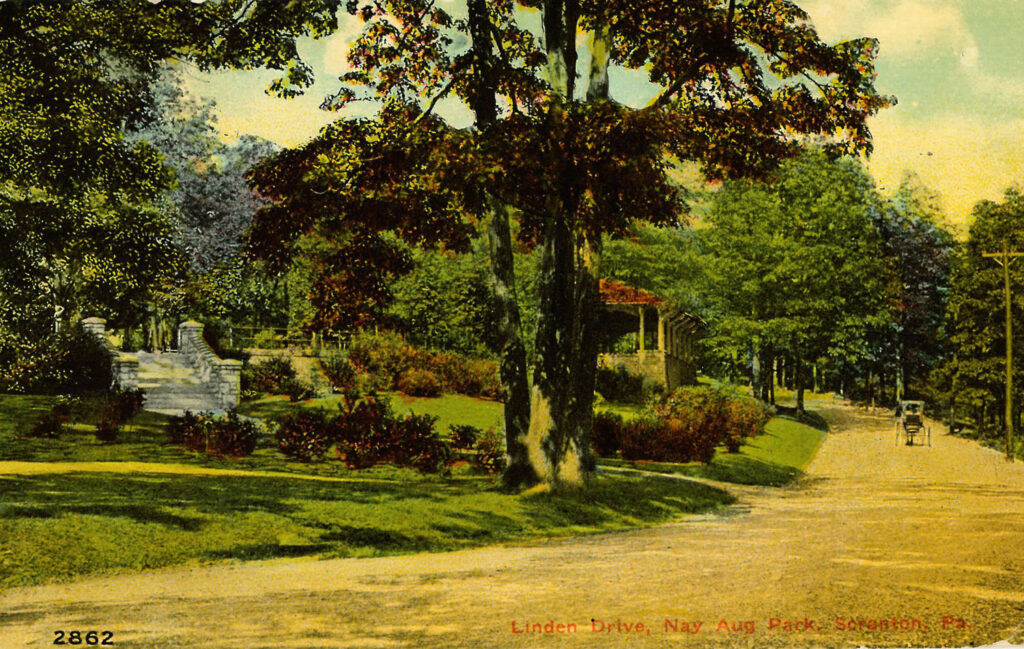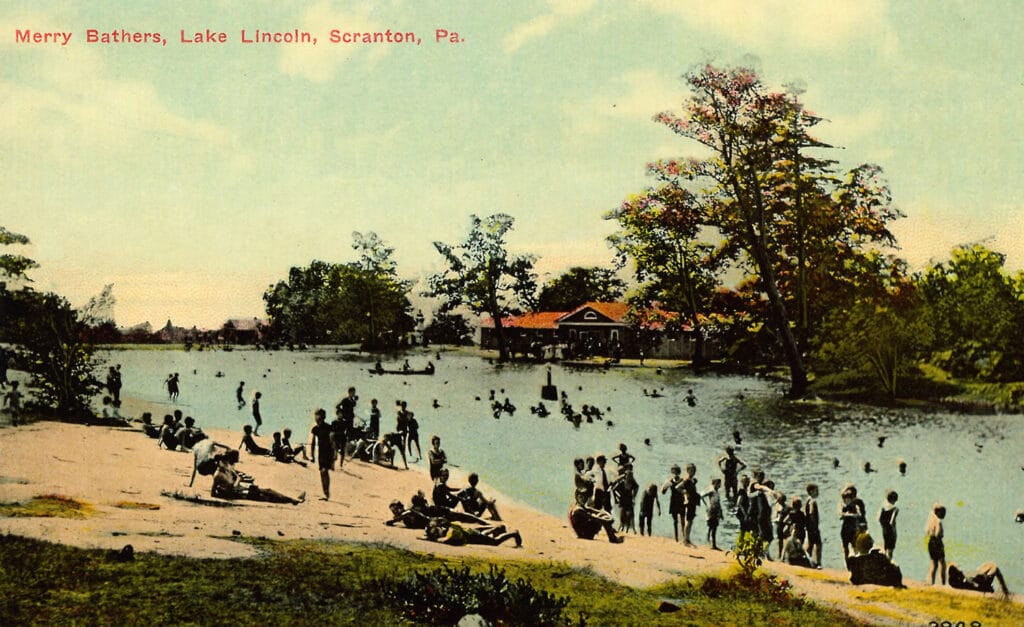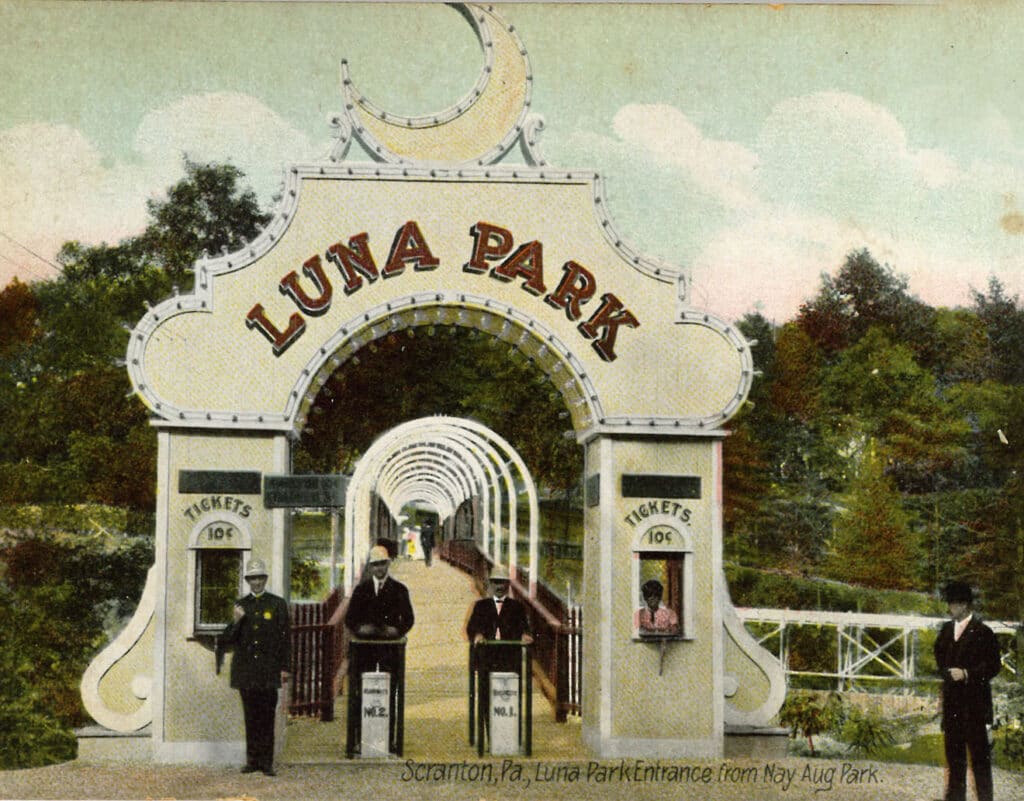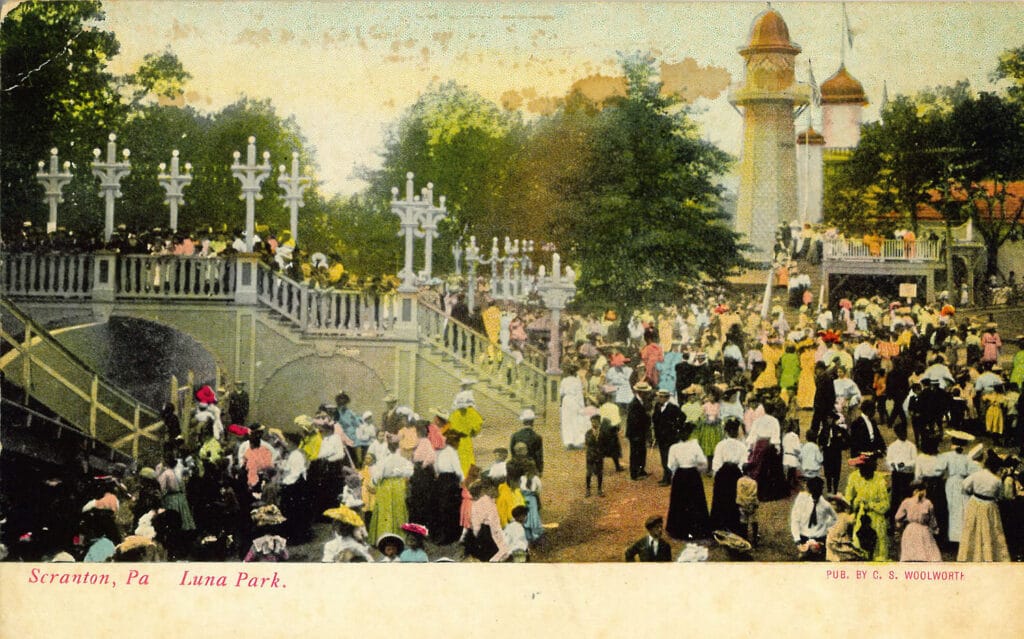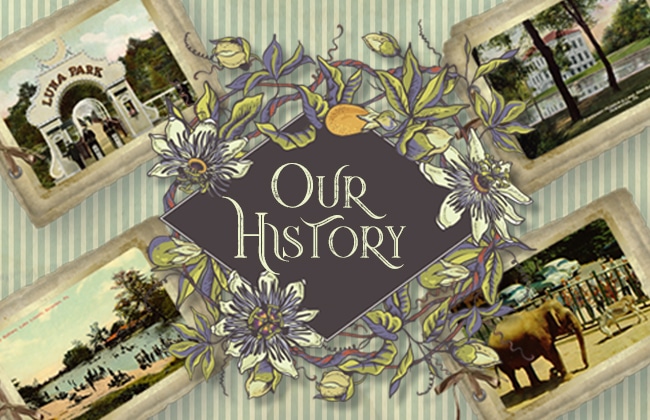
The name Nay Aug traces its origin to the Munsee Indians, a sub group of the larger Lenape tribe. In their language Nay Aug means “noisy water or roaring brook.” The Munsee settled along the banks of the Roaring Brook and were a peaceful group mostly committed to fishing and farming.
Nay Aug Park was established in 1893. Scranton’s 9th Mayor, W.L. Connell directed the purchase of 2 acres of land in the city’s east side from the Beckett Estate. The early years were a boom for the citizens of Scranton and the park. The population was growing and leaders had the foresight to realize the need for a place to gather. The city purchased five more acres of land from the Beckett Estate. Scranton received donations of land from the Watres Estate and Lackawanna Iron and Coal which owned the majority of land the park now occupies.
There was an amusement park located on the eastern side which was Luna Park. It opened in 1906 and met with a disastrous fire in 1916 and never recovered and subsequently closed for good. The land was incorporated into what is now Nay Aug Park.
Park Development
Nay Aug began to develop in earnest in the early 1900’s. Landscaping began, pavilions were built as well as roads and pathways that stretched around the entire park. The bandstand, Marmi Pavilion, Brooks Mine and Cleland Greenhouse were the first additions to the southeast corner of the park. In 1908, Dr. Isaiah Everhart presented the city with a museum to house his extensive natural history collections including a large assortment of bird specimens.
Development of the park continued at an aggressive pace. It began to spread out over the entire area. Nay Aug was growing and the citizens wanted more. The most exciting and favorite attraction at the park was Lake Lincoln. Lake Lincoln was developed in 1909. It was a dug out, dirt bottom pool. It had a tree lined shore that utilized the natural stone shelf to encompass the entire pool. In 1929 a concrete bottom and a water circulation system were added. In July 1967 a new swimming complex was dedicated called the Walsh Swim Complex. Two Olympic size swimming pools were installed and remain in place today.
In 1917 a zoo was developed housing a large array of animals, domestic and exotic over the years. For years Nay Aug offered the only zoo within hundreds of miles. The zoo has since closed, but the historic building remains as well as the memories enjoyed by generations.
Throughout the years Nay Aug has continued to grow. There was a small amusement park which offered rides for kids of all ages. Karl and Ralph Strohl, who received the amusement park from their grandfather, operated the park until its closing in the early 1990’s. It offered many rides for younger children and families for over 70 years. A few of the most popular rides were the Merry-go-Round, the Comet Coaster, a small wooden roller coaster, and a miniature Lackawanna Railroad train. The arcade building once house a dance hall during the 1930’s and 1940’s where “Big Band” orchestra style music would come and perform. As time went on and interests changed the building became home to bumper cars and arcade machines. Many family outings, company picnics, and social gatherings took place in the park using the rides and picnic grounds for their enjoyment. The amusement park closed and the area is now a green space where weekly concerts take place in the warmer months.
The addition of monuments and memorials to our veterans and various wars have been placed around the grounds. In the early years it was not uncommon to see a gathering to honor our veterans with over 50,000 people in attendance.
Nay Aug Park is a large historic urban green space within city limits. The park attracts visitors both near and far. To learn more about our history feel free to contact the Lackawanna Historical Society in Scranton.
Scranton Municipal Recreation Authority Board of Directors
Chairman
Bob Gattens
Secretary
Norma Jeffries
Treasurer
Barbara O’Malley
Solicitor
Atty. Paul A. Kelly
Mayor
Paige Cognetti
Vice Chairman
Thom Welby
Sonia Lobo
Dylan Cawley
Pamela Anslinger
